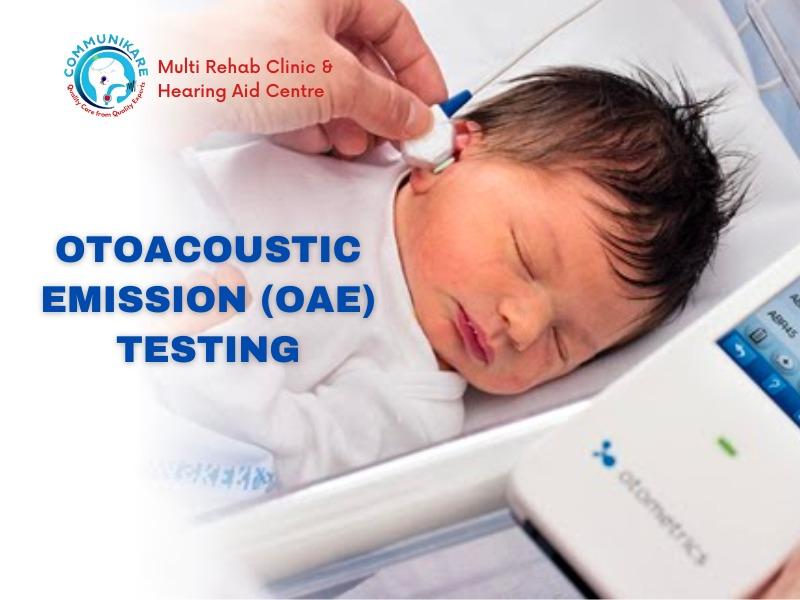Otoacoustic Emission (OAE) Testing
Admin
December 26, 2022

Otoacoustic Emission (OAE) Testing
The OAE (Otoacoustic Emissions) testing measures a portion of the reaction of the inner ear
to sound. The test is typically administered to infants and children who, because of their age,
may not be able to respond to behavioral hearing tests
Otoacoustic emissions are sounds emitted by a small portion of the cochlea in response to
soft clicking sounds. When the cochlea is stimulated by sound, outer hair cells vibrate. The
vibration generates an almost inaudible sound that echoes in the middle ear.
In medical evaluation, there are two forms of otoacoustic emissions:
- TOAEs, or transient evoked otoacoustic emissions, are a type of transient otoacoustic
emission (TEOAEs) – Sounds released in response to a very brief acoustic stimulus;
often clicks but also tone-bursts. - Otoacoustic distortion product emissions (DPOAEs) – Sounds generated in reaction
to two tones of different frequencies occurring simultaneously
Your outer ear, your middle ear, and your inner ear are the three components that make up
your ear. Your inner ear, also known as the cochlea, will be evaluated using an OAE test to
see how well it functions. Otoacoustic emissions, often known as OAEs, are what this device
measures. These are the noises that are produced by the inner ear in response to an external
sound. The inner ear contains hair cells that react to sound by vibrating in response to the
stimulus. The vibration causes the production of a very soft sound, which then echoes back
into the middle ear. The OAE is determined by listening to this sound.
OAEs are something that will be produced if your hearing is normal. If you have a hearing
loss that is larger than 25–30 decibels (dB), you won’t be able to create sounds that are very
low in volume.
This examination might also reveal whether or not there is a blockage in your middle or
outer ear. In the event that there is a blockage, it will not be possible for any sounds to reach
the inner ear. This indicates that there won’t be any sounds or vibrations that return back.
OAE Testing
The OAE test is a painless procedure that just requires a little probe to be placed in the ear of
the patient. The patient will hear a succession of tones or clicking sounds during this
process. The patient will be required to remain still and silent throughout the entirety of the
examination, which will take place in a relatively small sound booth. After around thirty
minutes, the audiologist will provide you with feedback on your performance based on the
test that was just completed.
Pediatric audiologists are clinicians that have received specialized training and have
competence in working with children, specifically in determining whether or not a kid
suffers from hearing loss. An audiologist that specializes in pediatrics will be able to
determine which tests are necessary to do, as well as execute those exams in an accurate and
timely manner. If a hearing loss is found, the pediatric audiologist will provide you with
information regarding hearing loss, as well as choices for communication and available
services.



Categories

We Care for Your communication,
Quality Care from Quality Experts.
Quick Links
Subscribe Our Newsletter
You’ll receive regular updates on our special offers, and other exciting news.
www.communikare.in